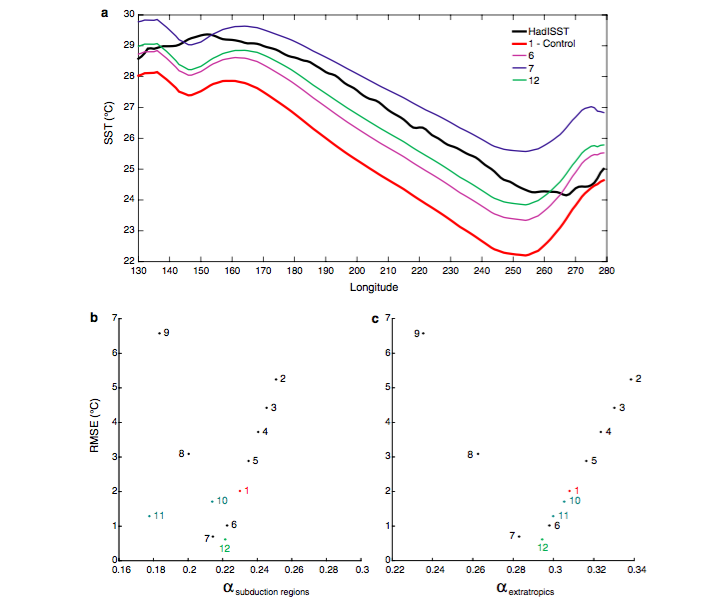Extra-tropical origin of equatorial Pacific cold bias in climate models with links to cloud albedo
Abstract
General circulation models frequently suffer from a substantial cold bias in equatorial Pacific sea surface temperatures (SSTs). For instance, the majority of the climate models participating in the Coupled Model Intercomparison Project Phase 5 (CMIP5) have this particular problem (17 out of the 26 models evaluated in the present study). Here, we investigate the extent to which these equatorial cold biases are related to mean climate biases generated in the extra-tropics and then communicated to the equator via the oceanic subtropical cells (STCs). With an evident relationship across the CMIP5 models between equatorial SSTs and upper ocean temperatures in the extra-tropical subduction regions, our analysis suggests that cold SST biases within the extra-tropical Pacific indeed translate into a cold equatorial bias via the STCs. An assessment of the relationship between these extra-tropical SST biases and local surface heat flux components indicates a link to biases in the simulated shortwave fluxes. Further sensitivity studies with a climate model (CESM) in which extra-tropical cloud albedo is systematically varied illustrate the influence of cloud albedo perturbations, not only directly above the oceanic subduction regions but across the extra-tropics, on the equatorial bias. The CESM experiments reveal a quadratic relationship between extra-tropical Pacific albedo and the root-mean-square-error in equatorial SSTs—a relationship with which the CMIP5 models generally agree. Thus, our study suggests that one way to improve the equatorial cold bias in the models is to improve the representation of subtropical and mid-latitude cloud albedo.


